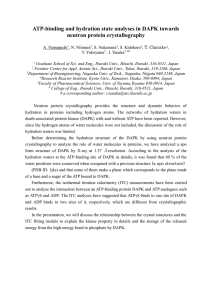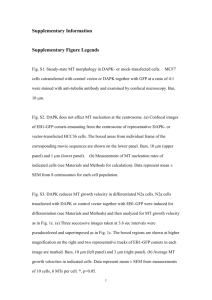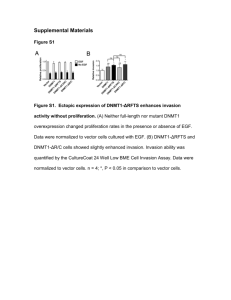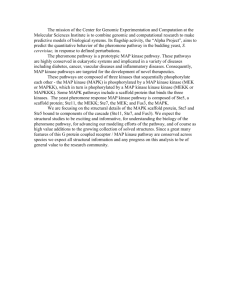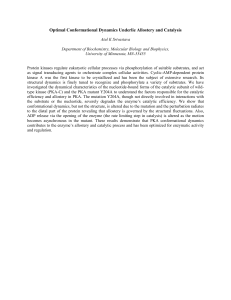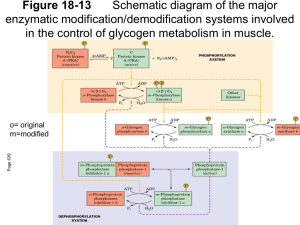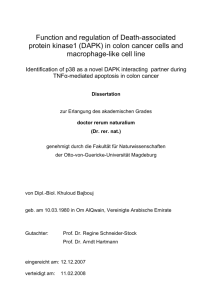Study of key enzyme sheds new light on programmed cell death and
advertisement
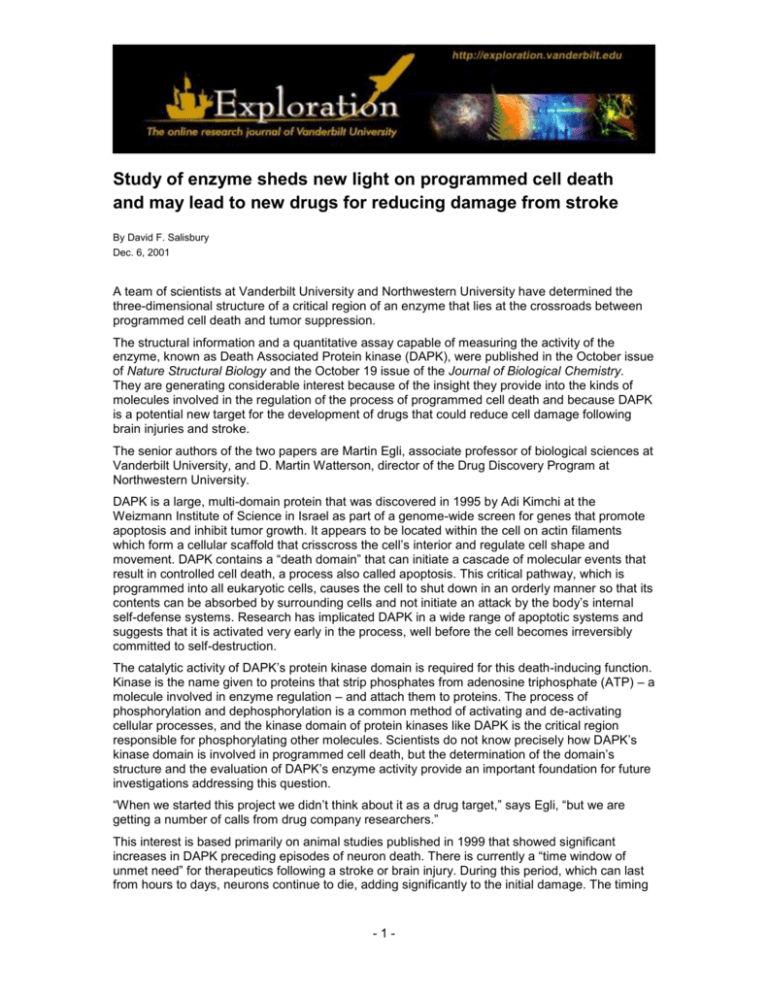
Study of enzyme sheds new light on programmed cell death and may lead to new drugs for reducing damage from stroke By David F. Salisbury Dec. 6, 2001 A team of scientists at Vanderbilt University and Northwestern University have determined the three-dimensional structure of a critical region of an enzyme that lies at the crossroads between programmed cell death and tumor suppression. The structural information and a quantitative assay capable of measuring the activity of the enzyme, known as Death Associated Protein kinase (DAPK), were published in the October issue of Nature Structural Biology and the October 19 issue of the Journal of Biological Chemistry. They are generating considerable interest because of the insight they provide into the kinds of molecules involved in the regulation of the process of programmed cell death and because DAPK is a potential new target for the development of drugs that could reduce cell damage following brain injuries and stroke. The senior authors of the two papers are Martin Egli, associate professor of biological sciences at Vanderbilt University, and D. Martin Watterson, director of the Drug Discovery Program at Northwestern University. DAPK is a large, multi-domain protein that was discovered in 1995 by Adi Kimchi at the Weizmann Institute of Science in Israel as part of a genome-wide screen for genes that promote apoptosis and inhibit tumor growth. It appears to be located within the cell on actin filaments which form a cellular scaffold that crisscross the cell’s interior and regulate cell shape and movement. DAPK contains a “death domain” that can initiate a cascade of molecular events that result in controlled cell death, a process also called apoptosis. This critical pathway, which is programmed into all eukaryotic cells, causes the cell to shut down in an orderly manner so that its contents can be absorbed by surrounding cells and not initiate an attack by the body’s internal self-defense systems. Research has implicated DAPK in a wide range of apoptotic systems and suggests that it is activated very early in the process, well before the cell becomes irreversibly committed to self-destruction. The catalytic activity of DAPK’s protein kinase domain is required for this death-inducing function. Kinase is the name given to proteins that strip phosphates from adenosine triphosphate (ATP) – a molecule involved in enzyme regulation – and attach them to proteins. The process of phosphorylation and dephosphorylation is a common method of activating and de-activating cellular processes, and the kinase domain of protein kinases like DAPK is the critical region responsible for phosphorylating other molecules. Scientists do not know precisely how DAPK’s kinase domain is involved in programmed cell death, but the determination of the domain’s structure and the evaluation of DAPK’s enzyme activity provide an important foundation for future investigations addressing this question. “When we started this project we didn’t think about it as a drug target,” says Egli, “but we are getting a number of calls from drug company researchers.” This interest is based primarily on animal studies published in 1999 that showed significant increases in DAPK preceding episodes of neuron death. There is currently a “time window of unmet need” for therapeutics following a stroke or brain injury. During this period, which can last from hours to days, neurons continue to die, adding significantly to the initial damage. The timing -1- Study of key enzyme sheds new light on programmed cell death and may lead to new drugs for reducing damage from stroke of DAPK’s increase in the animal studies combined with its established role in initiating cell death raise the possibility that DAPK inhibitors could reduce neuronal cell death during this critical period. “Currently, there is nothing that doctors can do to address the fundamental cause of neuronal death during this period,” Watterson says. “So there is considerable interest in the possibility that administering a DAPK inhibitor during this period might reduce brain damage.” Before this can happen, however, researchers must find small molecules that inhibit DAPK which can be used for additional investigations. The determination of the structure of DAPK’s kinase domain and the development of a quantitative assay now make it possible for drug researchers to develop high throughput screens to identify candidate inhibitors and to employ structure-assisted design procedures to create them from scratch. The description of a quantitative assay that can measure DAPK activity is the subject of the article in the Journal of Biological Chemistry. Watterson, working with Drug Discovery Program trainees Anastasia V. Velentza, Andrew M. Schumacher and Curtis Weiss, identified peptides that the kinase domain phosphorylates at a variety of different rates. This allowed them to create an assay that measures the activity level of DAPK quantitatively and provides insight into the localized features that DAPK prefers in protein substrates. The quantitative assay is being used to screen libraries of chemical compounds for the ability to inhibit DAPK. The compounds in the library represent a broad spectrum of small molecular structures with drug-like properties. Such screens are likely to find a collection of molecules that are weak inhibitors of DAPK. These compounds must then be improved using the techniques of synthetic chemistry. Once such candidate inhibitors are found, their structures can be fine-tuned using the information about the structure of DAPK’s kinase domain that was reported in Nature Structural Biology, by Egli, working with Valentina Tereshko and Marianna Teplova, former research associates in his laboratory who are now at the Memorial Sloan-Kettering Cancer Center. They produced a threedimensional map of the kinase domain with the highest resolution obtained for any known kinase. The higher the resolution with which the structure of a kinase is known, the easier it is for drug developers to use molecular modeling techniques to design “virtual” molecules that have the proper structure to bind with the active regions of the enzyme and interfere with its normal function. DAPK’s involvement in cancer may also prove to be important. The view of cancer as a disease of uncontrolled cell growth is gradually being replaced by its additional characterization as a disease resulting from malfunctions in the process of cell death. Reductions in DAPK expression have been found in a variety of different types of human cancer. In this case, researchers will be searching for agents that can reactivate programmed cell death in tumor cells. It is possible that the levels of kinase activity of DAPK need to be reactivated in certain tumors, or a critical molecule that serves as a substrate for DAPK might be missing. The newly published research provides an important knowledge base for the search for DAPK substrates in normal and diseased tissue. The initial phase of this inhibitor discovery research will be reported by Watterson, Egli and their collaborators at the Spring 2002 Experimental Biology Meeting in New Orleans. The research was supported by the Alzheimer’s Association, the Institute for the Study of Aging and the National Institutes of Health. -VU- -2-
